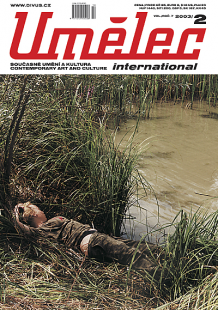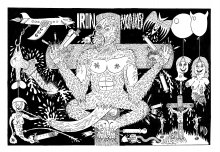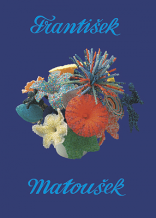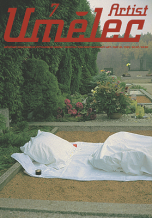| Umělec 2008/1 >> When the Taliban destroyed the Buddha-Statues… | Просмотр всех номеров | ||||||||||||
|
|||||||||||||
When the Taliban destroyed the Buddha-Statues…Umělec 2008/101.01.2008 Spunk Seipel | protest | en cs de es |
|||||||||||||
|
When the Taliban announced the destruction of the Buddha statues of Bamiyan at the end of the year 2000 in Afghanistan, a wave of protest went around the world. In all Western countries, the cultural scene was bewildered and tried to stop the destruction with helpless appeals to the Taliban. One of the worrying aspects of this was how muted the protests of the cultural scene had been about the Taliban’s permanent violations of human rights. Yet the fate of two Buddha statues in a remote Afghan valley, seen presumably only by a couple of scattered hippies on their way to India in the 60s and 70s, can stir the heart of a person engaged in the Western cultural sector more than the discrimination, torture and killing of millions of people.
There is no doubt that the destruction of the Buddha statues was a crime and a sign of cultural and ideological aberration of the worst kind. One may wonder, however, why the protests were so fierce back then, when there is almost no protest at all about a current project that entails the destruction of a much older and what, for mankind, may be a much more significant object of art. At best you can find a short notice in the back pages of a few newspapers. At issue is the planned, and—by the time this volume has been published—probably already implemented, destruction of 30,000-year-old Aboriginal petroglyphs in Australia. We are talking about one of the oldest known artistic representations of mankind, pictures of animals and mythical creatures that were carved into thousands of granite blocks. Experts argue that nothing comparable exists anywhere and point out that the significance of these petroglyphs is akin to that of the Lascaux Cave paintings in France. Some can still be found on the coast of the Burrup peninsula near the town of Dampier in north-western Australia. But now some of these artworks have to give way to the expansion of an industrial complex. The conservative Australian minister for the environment, Malcolm Turnbull, has issued a permit to the oil and gas giant Woodside Petroleum allowing the removal of the petroglyphs so that the company can enlarge its facilities for the storage and shipping of petroleum gas. Billions of dollars from the export of petroleum gas to Japan and China are at stake, and one of the world’s largest gas fields is located off the peninsula. What is more, the natural resource giant Rio Tinto ships its iron ore from Dampier. Orange metal dust coats the surroundings of the town and also damages the petroglyphs, which is denied, however, by both Rio Tinto and the government of Western Australia. In 1868, many of the Aborigines living on the Burrup peninsula were murdered. The descendants of the few survivors are now resisting the partial destruction of their “bible,” but they are fighting a lone battle. The art and culture of the Aborigines are not exactly highly valued in Australia. In Europe and America as well, people are at best interested in the didgeridoos of the original inhabitants of the continent. A compromise that offered to move the complex to an industrial site 40km further south and thereby save the Aboriginal petroglyphs has been rejected for reasons of economy. The companies are making billions annually. The rocks will probably be taken apart and end up on a dump, just like those that were removed for the construction of the first industrial plant in the 1960s. Ever since then, they have been lying near the gas complex, unprotected from thieves and vandals behind an old fence, forgotten by the world. In this state and at this location they neither fulfill their cultic functions for the Aborigines nor can they offer scientists any new insights. For the construction of the Aswan dam in Egypt, the temples of Abu Simbel were correctly relocated, among other things, regardless of extraordinary expenses. In Europe and America, money is currently being collected to re-construct the destroyed Buddha statues of Bamiyan. In Australia, however, because of a few million dollars, one of the greatest and most ancient human works of art will be destroyed, and no one, apart from the Aborigines, seems to be bothered. In the cultural sector of Western countries no protests are being mounted. The example of the Buddha statues shows that it cannot have anything to do with the fact that Dampier is a remote place. Does even the cultural scene worry more about the scarcity of natural resources than about pieces of art? Or is it simply the case that Aboriginal art is alien to us and that the occasion of our protests is always chosen very subjectively? What on earth are a couple of rock carvings in comparison with those friendly Buddha faces? And is it not much easier to protest against some wacky Taliban than against a company whose activities ultimately ensure the smooth running of our society? This is probably the reason why no one in the cultural sector is interested in this barbaric act. We should all take this as an opportunity to think about how we deal with the art of other cultures and how seriously our storm of protest against the Taliban is to be taken. Surely, a protest against an Australian ore and gas company would have had a greater chance of success.
01.01.2008
Рекомендуемые статьи
|
|||||||||||||
|
04.02.2020 10:17
Letošní 50. ročník Art Basel přilákal celkem 93 000 návštěvníků a sběratelů z 80 zemí světa. 290 prémiových galerií představilo umělecká díla od počátku 20. století až po současnost. Hlavní sektor přehlídky, tradičně v prvním patře výstavního prostoru, představil 232 předních galerií z celého světa nabízející umění nejvyšší kvality. Veletrh ukázal vzestupný trend prodeje prostřednictvím galerií jak soukromým sbírkám, tak i institucím. Kromě hlavního veletrhu stály za návštěvu i ty přidružené: Volta, Liste a Photo Basel, k tomu doprovodné programy a výstavy v místních institucích, které kvalitou daleko přesahují hranice města tj. Kunsthalle Basel, Kunstmuseum, Tinguely muzeum nebo Fondation Beyeler.
|
































 New book by I.M.Jirous in English at our online bookshop.
New book by I.M.Jirous in English at our online bookshop.
Комментарии
Статья не была прокомментированаДобавить новый комментарий